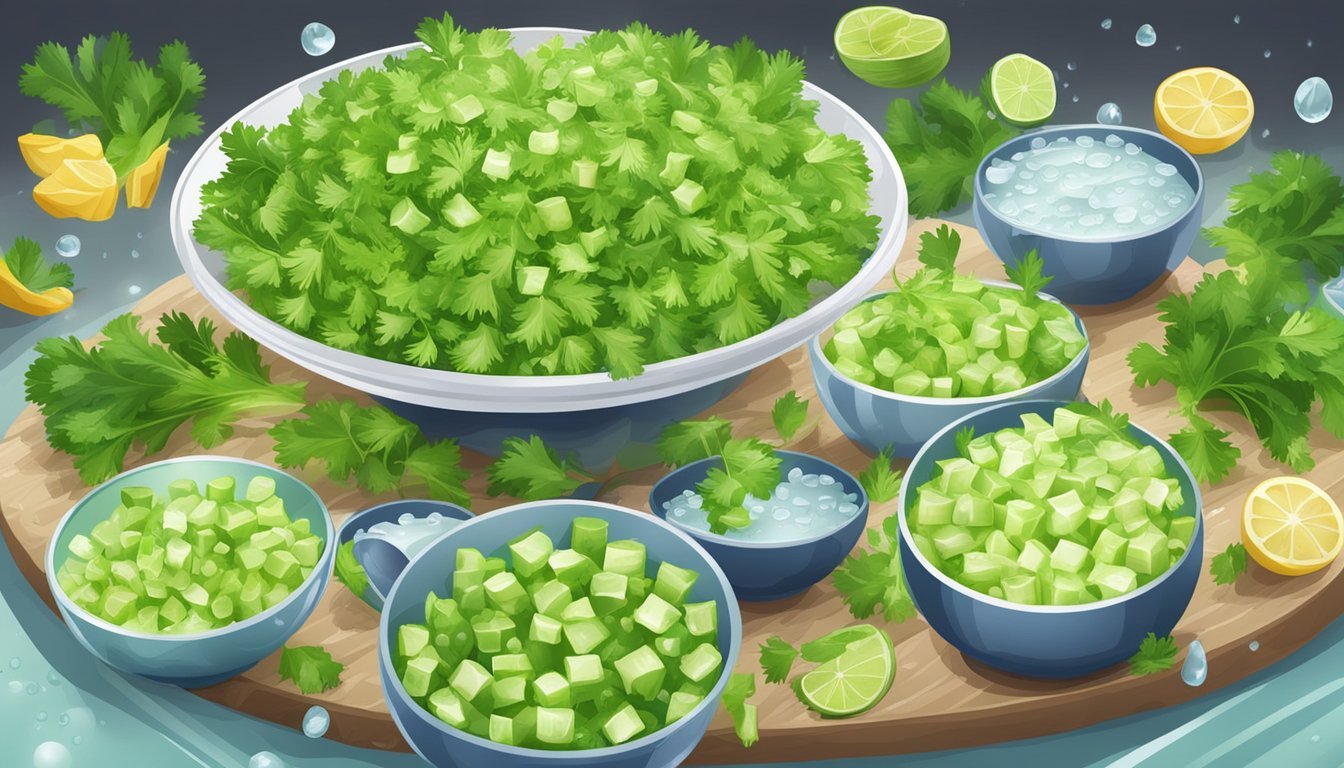How Many Cups of Celery for Hydration?
Understanding the Water Content
Maintaining adequate hydration is essential for overall health, and the foods one consumes can play a significant role in meeting daily fluid needs. Celery, composed of about 95% water, is a vegetable that can support hydration due to its high water content. Coupled with the fact that it's a low-calorie snack with an array of nutrients, it makes for an optimal choice for those looking to stay hydrated and nourished.
When considering celery's contribution to hydration, it is important to understand that while it should not replace water intake, it can be a supplemental source of fluids. The high water content in celery provides a hydrating effect, with a single cup offering notable hydration benefits. However, the amount of celery one should consume specifically for hydration can vary based on individual dietary needs and overall water consumption from other sources.
Incorporating celery into one's diet is straightforward. It can be consumed raw, added to salads, or juiced. Celery juice, in particular, has gained popularity as a hydrating beverage. While there is no one-size-fits-all recommendation for the number of cups of celery to eat for optimal hydration, incorporating it regularly into one's diet can aid in meeting hydration goals, particularly for those seeking variety in hydrating food options.
Celery Overview
Celery is a low-calorie vegetable known for its high water content and rich nutritional benefits, making it particularly important for hydration. Its composition of vitamins, minerals, and phytonutrients contributes to various health benefits.
Nutritional Profile
Celery is potent in a variety of nutrients, providing vitamins A (from beta-carotene), B, C, and K, along with minerals such as calcium, potassium, and sodium. It is also a source of dietary fiber and contains antioxidants like flavonoids.
Health Benefits
The antioxidants and anti-inflammatory properties in celery can help combat oxidative stress and may support heart health, reduce blood pressure, and assist in preventing chronic illnesses.
Comparative Hydration Sources
Compared to other fruits and vegetables like cucumbers, lettuce, and watermelon, celery is exceptional for hydration due to its high water content and balance of electrolytes.
Role in Illness Prevention
Consuming celery may be linked to preventative effects on conditions such as arthritis, high cholesterol, and blood sugar fluctuations due to its anti-inflammatory properties.
Hydration Quantification
Celery's high water content makes it a valuable food for maintaining hydration. The exact amount needed for optimal hydration of course varies depending on individual needs and climate conditions.
Preparation and Serving Suggestions
Celery can be eaten raw or cooked. It is commonly used in salads, soups, and smoothies. Using a blender retains more fiber compared to juicing, which can provide a more comprehensive hydration effect.
Additional Ingredients Interaction
Paired with fruits like apples or vegetables like carrots, celery can contribute to a balanced intake of nutrients and hydration.
Culinary Uses
Celery is a versatile ingredient, used in a variety of recipes ranging from stir-fries to smoothies. It is also a key component of mirepoix, a flavor base for many dishes.
Popular Celery Pairings
Celery pairs well with ingredients like peanut butter and raisins in the classic "ants on a log" snack. Its crisp texture complements the sweetness of fruits like green apples and pineapples.
Storage and Freshness
Proper storage in a refrigerator helps maintain celery's freshness and high water content. Fresh, crisp stalks indicate good hydration quality.
Understanding Portion Sizes
A single cup of celery is a useful measure for daily consumption, providing significant water content and nutrients like vitamin K and folate.
Buying Guide
When purchasing celery, look for firm stalks and a bright green color. Avoid wilted or discolored celery as it may have reduced nutritional value and hydration capacity.
Hydration and Meal Planning
Incorporating celery into meal plans can help augment water intake, especially for those who struggle to meet their daily water intake recommendations as provided by the IOM. It can be part of snacks, side dishes, or entrees.
This section emphasizes that celery is an excellent food for hydration due to its high water and nutrient content. It outlines the suitable incorporation of celery into various meals and its roles in health and disease prevention.



